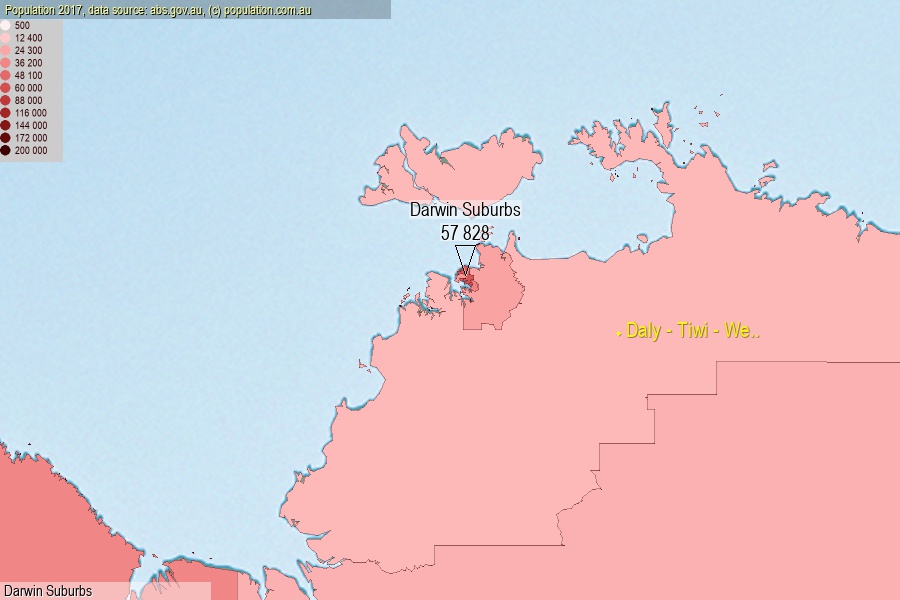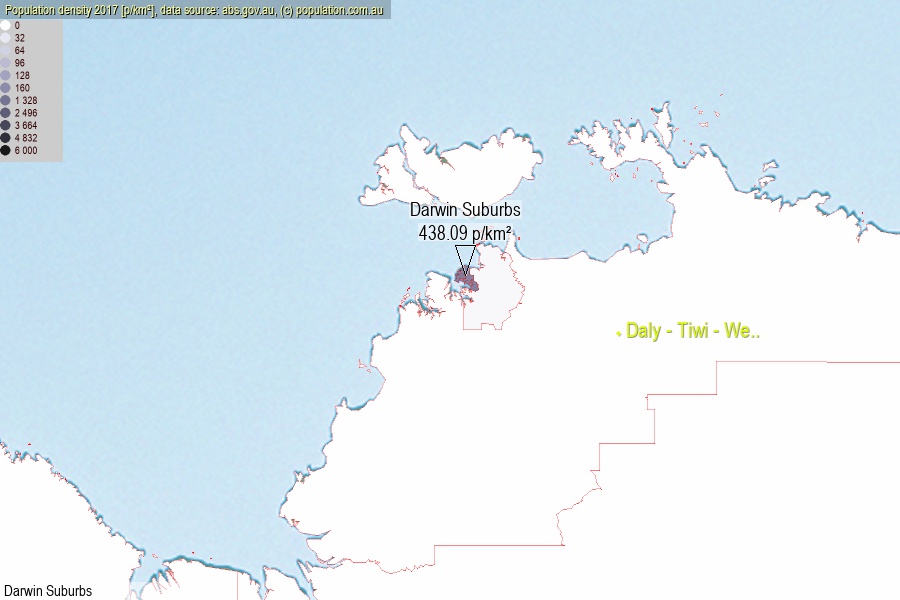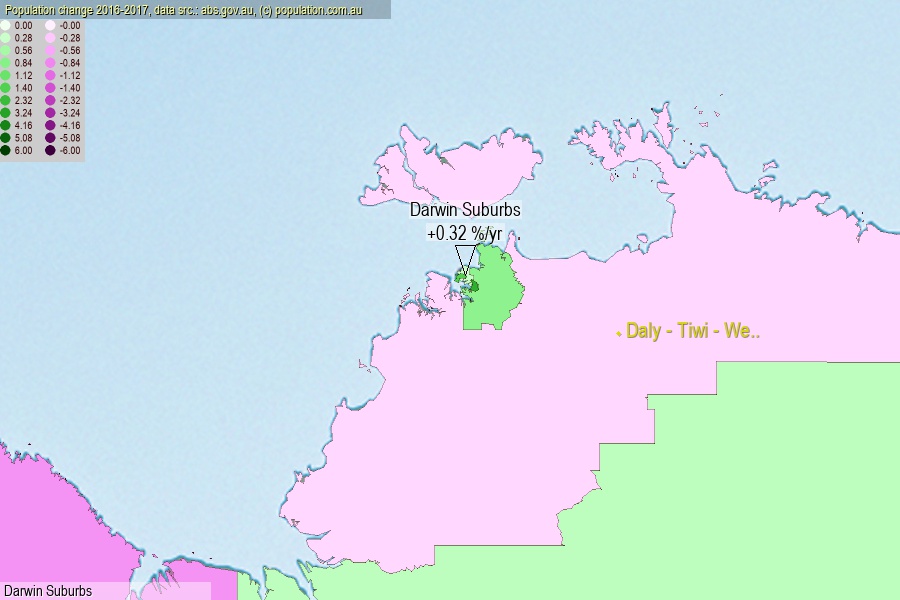 population.com.au
population.com.auLast official estimated population of Darwin Suburbs (as Statistical Area Level 3) was 57 828 people (on 2017-06-30)[2]. This was 0.23% of total Australian population and 23.442% of NT population. Area of Darwin Suburbs is 132.00 km², in this year population density was 438.09 p/km² . If population growth rate would be same as in period 2016-2017 (+0.32%/yr), Darwin Suburbs population in 2025 would be 59 313. [0]



Click to enlarge. Darwin Suburbs is located in the center of the images.
Population [people], population density [p./km²] and population change [%/year] [2]
View borders » (new window) [4]
[1991-1992] +0.20 %/Y
[1992-1993] -0.44 %/Y
[1993-1994] -0.31 %/Y
[1994-1995] +0.90 %/Y
[1995-1996] +0.61 %/Y
[1996-1997] -0.11 %/Y
[1997-1998] -1.11 %/Y
[1998-1999] -1.46 %/Y
[1999-2000] -0.15 %/Y
[2000-2001] -0.22 %/Y
[2001-2002] -0.95 %/Y
[2002-2003] -1.13 %/Y
[2003-2004] -0.39 %/Y
[2004-2005] +0.38 %/Y
[2005-2006] +0.42 %/Y
[2006-2007] +1.45 %/Y
[2007-2008] +1.96 %/Y
[2008-2009] +2.34 %/Y
[2009-2010] +1.43 %/Y
[2010-2011] +0.34 %/Y
[2011-2012] +1.68 %/Y
[2012-2013] +2.49 %/Y
[2013-2014] -0.17 %/Y
[2014-2015] +0.06 %/Y
[2015-2016] +0.25 %/Y
[2016-2017] +0.32 %/Y
[0] Calculated with linear interpolation from officially estimated population
[1] Read more about SA3 and Australian Statistical Geography Standard (ASGS) on abs.gov.au
[2] Population data from Australian Bureau of Statistics (Population and density: 2017; change: 2016-2017)
[3] Digital Boundaries: Australian Statistical Geography Standard (ASGS) 2016.
[4] Border coordinates are simplifyed using Ramer-Douglas-Peucker algorithm.